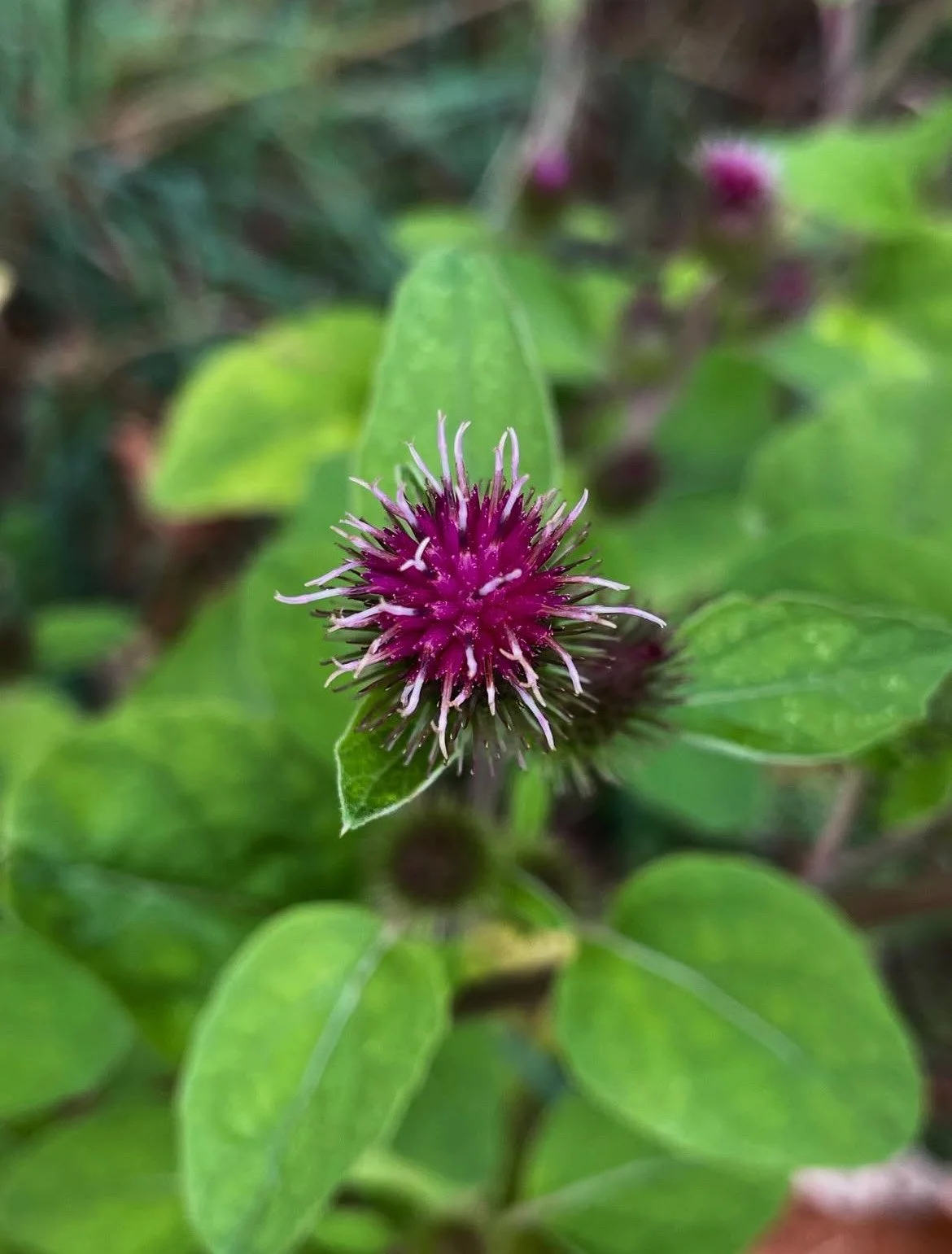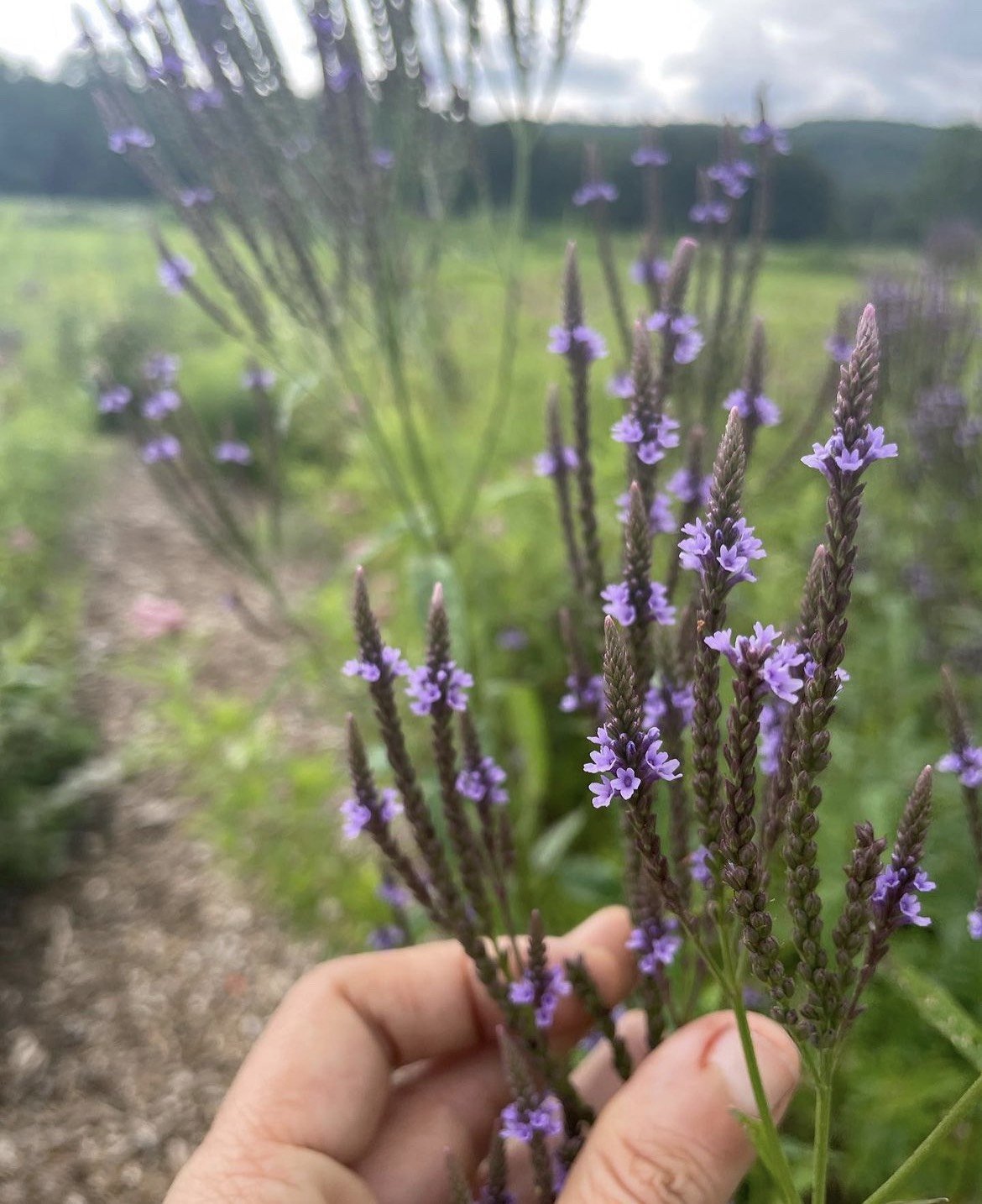Medicinal Mushrooms in the Kitchen
Catch a replay of Jade’s “Medicinal Mushrooms in the Kitchen” workshop diving into delicious Shiitake, Lion’s Mane and Maitake and ways to unlock their medicinal properties in the kitchen.
Fall Foraging & Feasting: Seeds, Fruits, Roots, Barks & More
The fall is an excellent season for foraging if you know what you’re looking for. It’s a season for collecting fruits, seeds, roots, barks, nuts, mushrooms, and even wild greens. I actually think of it as a “second spring” in the sense that many of our spring herbs, like Violet lf, Dandelion lf, Garlic Mustard, Chickweed, and more, revel in the cool and moist weather of the fall that’s so similar to the spring weather, in which these plants also thrive.
In this post I share some of my favorite herbs to forage in the fall. And I also share the recipes I made for my “Fall Foraging & Wild Food Dishes” workshop I taught this past week at Just Roots Community Farm. These are all nut, gluten and dairy free to accommodate attendees dietary needs!
Biomimicry & the Medicine of Burdock
Burdock is a classic in the herbal repertoire, valued as a potent medicine and functional food. They are biennial plants on a two year life cycle, creating a basal rosette of just leaves in their first year of growth and growing a flowering stalk in their second year, subsequently going to seed, completing their life cycle and finally dying for good. Like many biennial and annual plants, their primary reproductive strategy is to create loads of seeds to propagate themselves and Burdock has cleverly devised an ingenious way to disperse their seeds: by creating the most tenacious seed capsules, which we colloquially call "burs", maybe on the planet. These cling to unaware passerby's (humans and animals alike) who carry them afield, spreading the Burdock love far and wide. Nature is brilliant.
In fact, these burs are so good at their job that Velcro was actually inspired by them and was created by Swiss engineer George de Mestral after an encounter him and his dog had with Burdock in 1941 that left them both covered in the burs….
Connecting with the Land Through “Invasive” Plants
If you think about it, can a plant actually invade? Isn’t that anthropomorphism, which science cautions against adopting and supposedly rejects? And yet, ecology now classifies certain plants- including even some considered native- as “invasive.” I feel this notion is misguided. It perpetuates the “man vs nature” mythos and drives habitat destruction, the poisoning of the earth (supposedly for the sake of the environment) and separates us even farther from nature. It also positions humans as experts when we’ve been around a mere 300,000 years at most, which is a blink of an eye compared to plants.
This spring I was interviewed on my thoughts on plants labelled “invasive” for the Healing of Power of Plants Summit and below is a recording of the interview.
And if you’d rather listen to the interview you can do so here
Nettles & Spring Greens Sauerkraut
This recipe is one of my favorite spring traditions. And while of course many wild foods are in season from spring through fall, there's something about the exuberance of the spring and the undeniable vitality of the plants right now that makes the spring my favorite season to imbibe in wild foods.
And when we make dishes with raw wild greens we've foraged or even picked from our gardens or bought at local farmers markets, we're infusing our microbiome with our bioregional, wild microbial "terroir” present on the leaf surface of these plants. The gut microbiome is a diverse microbial array that lives in our digestive system and has a hand in regulating mood, mental health, digestion, nutrient absorption, immunity…and the research just keeps growing.
The Medicine of Stinging Nettles & Nettles Puttanesca
Nettles are beloved in herbalism for good reason. Truly a “people plant,'“ Nettles grows on every continent but Antarctica and everywhere us humans have encountered this plant, we’ve woven them into our food systems, medicine cabinets and cultures. Humans and Nettles have an intertwined history and we have evidence of their use dating back to the Bronze Age 3,000 years ago, as a fiber plant, and it’s quite likley that our connection with Nettles goes back even further than the archeological record shows
Gut Heal Gummies & Gut Heal Tea
Traditional medicine systems the world over agree that digestion is the root of health. Sadly, our modern population is plagued with digestive issues- gut dysbiosis, IBS, Leaky Gut, food sensitivities, poor digestion, malabsorption and the myriad of autoimmune disorders which can stem from the inflammation that often arises from a leaky and irritated gut. Gut Heal Tea and Gut Heal Tea, are both great ways to repair the micro-injuries that inflame and irritate the gut from inflammatory foods, allergens, chemicals in our foods and environments, stress and more.
Principles of Bioregional Herbalism: Sinking Into the Medicine of Place
Many of us are familiar with the local food movement, but what about the local medicine movement?
Bioregional herbalism provides us with the framework to develop a system of healthcare that is place and plant-based, ecologically sound, and can operate independently from the profit-driven system of allopathic medicine in this country. For any individual who understands the importance of living with a light ecological footprint on the earth, bioregional herbalism offers an opportunity to align one’s values with one’s healthcare choices.
Sassafras Leaf Honey
I'm deeply enamored by the fall foliage, but even more so when I can make medicine with it. The Sassafras tree (Sassafras albidum) puts on such a show in the fall and, although the essential oils in the leaves are certainly more concentrated in the summer, the mucilage is still potent in the fall and lots of their aromatic and unique flavor is still present. I love gathering them now- when the trees are about to drop them anyway and they're in their full autumnal glory.- and make a potent and delicious herbal honey with them. You can even gather recently fallen leaves for medicine!
Wild Grape Amaro
“Amaro” in Italian means “bitter,” and the term is also synonymous with Italian herbal liquors infused with a staggering array of fruits, roots, barks, seeds, and herbs. Sometimes an amaro is also referred to as a “digestivo,” which makes perfect sense since these are often served after meals to aid digestion and to linger (even) longer over the meal.
The Healing Power of Purslane
Purslane (Portulaca oleracea) is a phenomenal food as medicine enjoyed in cuisines the world over from China to India to the Mediterranean, Levant, North America, Mexico, Australia, and beyond. It’s a common weed on every continent except Antarctica and everywhere humans have encountered this plant, they’ve woven it into their culinary traditions.
Where does Star Magnolia belong?
Where does Star Magnolia belong? And for that matter, how do we decide where a plant "should” and “shouldn't” be?
My hot take? We don't.
The Brain-Boosting Properties of Lion’s Mane Mushroom & Making a Medicinal Mushroom Double Extract
Lion’s Mane Mushroom is a powerful nootropic, has a special talent for helping heal damaged nerves, supports mood and helps alleviate depression, and possesses the famous beta-glucan polysaccharides that make medicinal mushrooms such potent immunomodulators.
Deep Winter Miso Soup
In honor of winter and the deep nourishment this season has to offer, I wanted to share with you all a favorite recipe I've been making that's also super appropriate for the winter in terms of food as medicine and seasonal energetics.
The Winter Herbal Medicine Cabinet
In thinking about herbs and preparations to have on hand during the winter months I find it helpful to think about classes of herbs by way of their herbal actions. Here are a few herbal actions to consider when picking herbs for your home winter apothecary and some of my favorite herbs to have on hand (but these lists are not at all exhaustive):
Grief Support Chai
Our grief is a portal, an opening, a passageway into honoring that which we love. Anyone who’s ever been grief-stricken can tell you that grief is an expression of love - the two are inseparable. Grief itself isn’t something to be cured or healed, it’s something to be in relationship with. And, still, sometimes it’s too much. The weight of it can bear down and become immobilizing, expressed as a state of deep nervous system activation, exhaustion, and chronic stress.
Rest & Digest Bitters and the Medicine of Blue Vervain
In the herb world there's kind of an inside joke that's basically this- some people are "Blue Vervain" people, meaning they're pretty Type A, love lists and order and control (but often get stressed-out trying to control everything), tend towards holding stress in their bodies- particularly the neck and shoulders- and are often a "work hard, play hard" type. In the Ayurvedic framework these are folks with LOTS of Pitta.
Honeyed Lemon Balm, Rose & Strawberry Jam
Rose season is quite possibly my most highly anticipated “plant season” of the year. Many of us bioregional herbalists mark the year in this way…April is Dandelion and Violet, May is Nettles, and Rose season here begins in June. Whether it’s Beach Rose growing wild on the coast, Wild Rose growing every which way with the brambles in the hedges, or a fragrant antique Rose growing in a hidden garden- I love them all.
Making Wild Herbal Sodas
Wild Sodas are a fun and easy way to make living, medicinal, naturally probiotic beverages that are made by wild fermentation- we don’t add any yeast- the wild yeast on the flowers and yeasts in the raw honey are what cause the fermentation! They can be made with 100% local ingredients, making them a wonderful example of “localvore medicine” that reflects the true terroir of the land and has a super small carbon footprint. I mostly make them in the warmer months, but they can be made year-round.
Herbal Vinegars, Oxymels & Spring Tonics
I first became interested in diversifying my apothecary with vinegar and honey-based preparations when, after a certain point, it started to feel like I was just dumping vodka on everything! And the more I began working with bioregionally abundant herbs, the more I wanted to start exploring bioregionally abundant menstruums (herbal vocab word for whatever you’re extracting into).



















